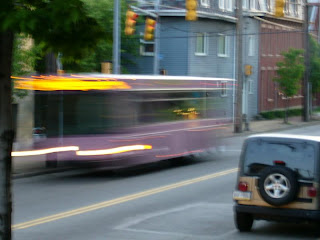Jerry Brown wanted to liven up the streets of Oakland and had to find a way to measure success. Brown, the former governor of California, was elected to the job of Mayor of Oakland (the city across the bay from San Francisco, not the place where you go on the 500 just in case there's confusion), came up with the "Starbucks Scale." At that point Oakland already had a Starbucks, a milepost in itself. The "Starbucks Scale" would use the number of hours that the coffee shop stayed open as a measure of the city's vitality. The longer Starbucks brewed, the better things would have gotten.
A few years back when Seattle's Best opened in PNC Park, I thought I would start to keep track. There wasn't much to track. If Seattle's Best was to be used as a measure of the North Shore's vitality, it soon added ice cream to become a confusing mix of hot and cold then joined the ranks of what used to be. Since then the North Shore has come along, and there may be a day on the horizon where there's brew available there to measure vitality, but for now, no java.
If coffee is a good measure, the area North of the expressway is actually ahead of the game. There's still no Starbucks (I just heard two locations were opening in Altoona soon and I never thought they'd have one first), but there are several coffee shops. The Vault (Brighton Heights) was first, followed by Charles Street Cafe, Beleza (War Streets) and most recently by Amani (East Allegheny). There are other places here to get coffee including the Priory Pastries, Cool Beans in Allegheny Center, the coffee cart in Allegheny General and in fairness to the North Shore, the Andy Warhol Museum Cafe. If hours are also a measure, Beleza has added more since opening this summer.
But what's so important about a coffee shop that it can be used as a measure of vitality anyway?
Coffee shops are something academics like to call "third places." The number three is attached as they follow the first place of home and the second place of work. Like cities, they are places where people go to interact and where ideas are likely to come together.
Sometimes those ideas focus on art, sometimes politics and sometimes business but in all cases they become a center for these areas. Writer Jack London lived in Oakland, CA and apparently liked coffee shops, but may not be so happy about Brown's use of the corporate green to measure his city's energy.
A socialist at the age of twenty, if London were alive today he might not be hanging out in his square. In fact, London ran unsuccessfully as the high-profile Socialist nominee for mayor of Oakland in 1901 (receiving 245 votes) and 1905 (improving to 981 votes), toured the country lecturing on socialism in 1906, and published collections of essays on socialism ( The War of the Classes, 1905; Revolution, and other Essays, 1910).
The first record of a public place serving coffee dates back to 1475 Constantinople. Apparently at that time it was legal in Turkey for a woman to divorce her husband if he could not supply her with enough coffee. Misbehaving in coffee shops was also punishable by death.
Chalk one up to Starbucks, politics aside, sometimes coffee is all about business. The Turks, filled with ideas, imported theirs to a few European countries including England where a small coffee shop run by Edward Lloyd in 1668 was such a business hub, it eventually became the still-operating Lloyd's of London insurance company.
In the American colonies the coffee house was also a hub for the business (and revolution). While we may have thrown the tea back to England, the coffee was here to stay. Business and coffee are so intertwined that the original location of the New York Stock exchange was the Tonine Coffee House. The earliest coffeehouses, in New Orleans were known as 'exchanges' where bankers and importers would meet to share information and ideas to further economic development. All this before anyone heard of Seattle of Starbucks.
Yet, the original "coffee houses" were similar to those today - a gathering place for conversation, entertainment and the exchange of ideas. Coffee houses may now prove of equal importance and purpose in North City neighborhoods, becoming gathering places for artists, business people and those with political ideas and ambitions. Since the opening of Amani I have met several neighbors I knew of only as names in email groups and met others to talk about business or ideas.
Many trace the start of change on the South Side to the opening of the Beehive Coffee House, which still retains its title as the city's best and most important social center. Once opened 24-hours any vitality meter would have gone off the scale. I can't help but think with the rise of North City coffee culture there's more brewing than beans. Here as elsewhere, coffee is bringing people and ideas together and that more often than not that results in art, politics and business.
To that point, Jerry brown is right, the longer the coffee brews, the better off we'll be.
this article previously appeared in the Northside Chronicle







